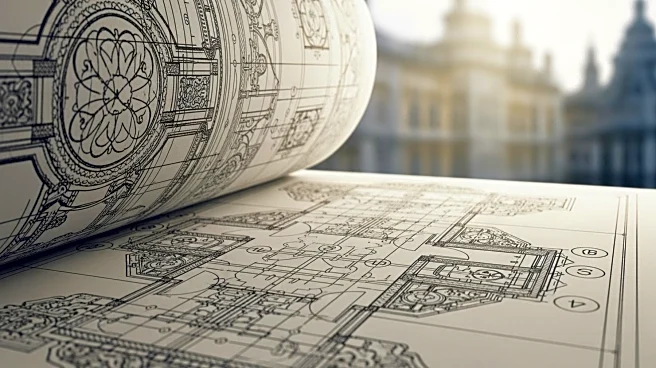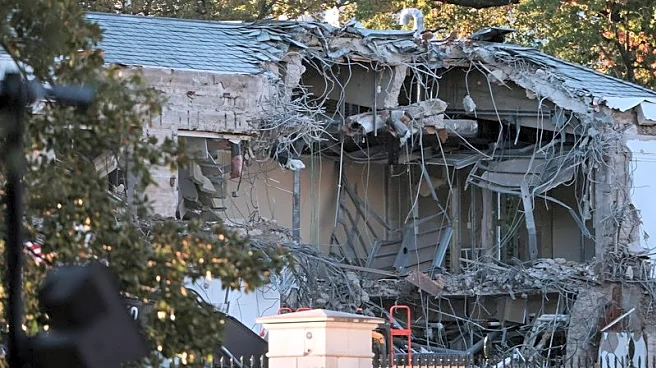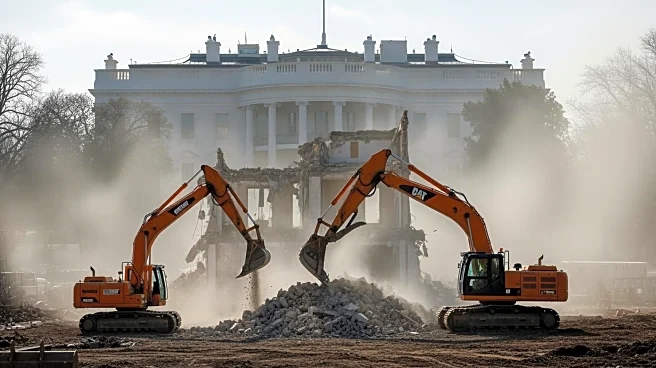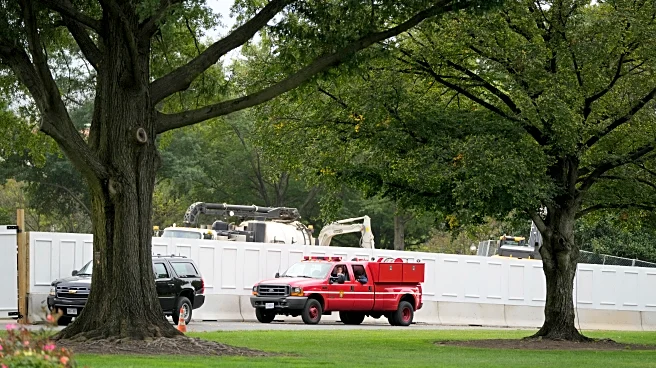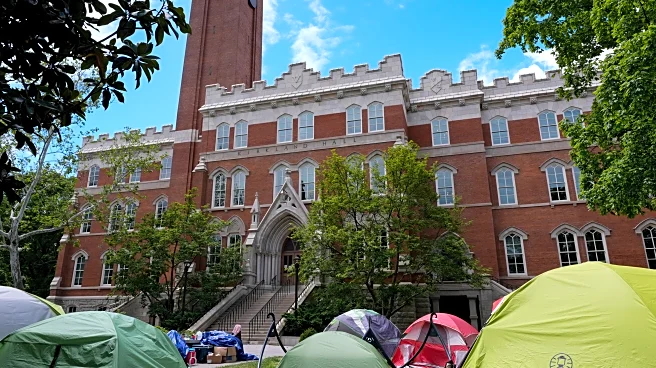What's Happening?
Demolition crews have started tearing down part of the White House's East Wing to construct a new ballroom, a project long desired by President Trump. Despite previous assurances that the $250 million
addition would not interfere with the existing structure, construction teams were seen demolishing a portion of the East Wing. The project, which aims to create a 90,000-square-foot structure, has been criticized by some lawmakers, including California Governor Gavin Newsom, who argue that it reflects misplaced priorities. The ballroom is intended to host grand parties and state visits, with President Trump stating that every president has dreamt of such a facility at the White House.
Why It's Important?
The construction of the ballroom at the White House represents a significant alteration to a historic building, raising questions about the preservation of national heritage. The project has sparked political debate, with critics arguing that it symbolizes a focus on opulence over pressing national issues. The ballroom's construction, funded by donations from major corporations, highlights the intersection of politics and private sector influence. The development may impact public perception of the administration's priorities, especially as it coincides with other national challenges.
What's Next?
As construction progresses, further scrutiny from political leaders and the public is expected. The project may face additional challenges related to historical preservation and public opinion. The administration will likely continue to defend the project as a necessary enhancement to the White House's functionality. The ballroom's completion could set a precedent for future modifications to the White House, potentially influencing how historical sites are managed in the context of modern needs.
Beyond the Headlines
The decision to build a ballroom at the White House raises broader questions about the balance between modernization and historical preservation. It also reflects cultural shifts in how presidential administrations prioritize infrastructure projects. The involvement of major corporations in funding the project may lead to discussions about the role of private donations in public projects, potentially influencing future policy on public-private partnerships.
